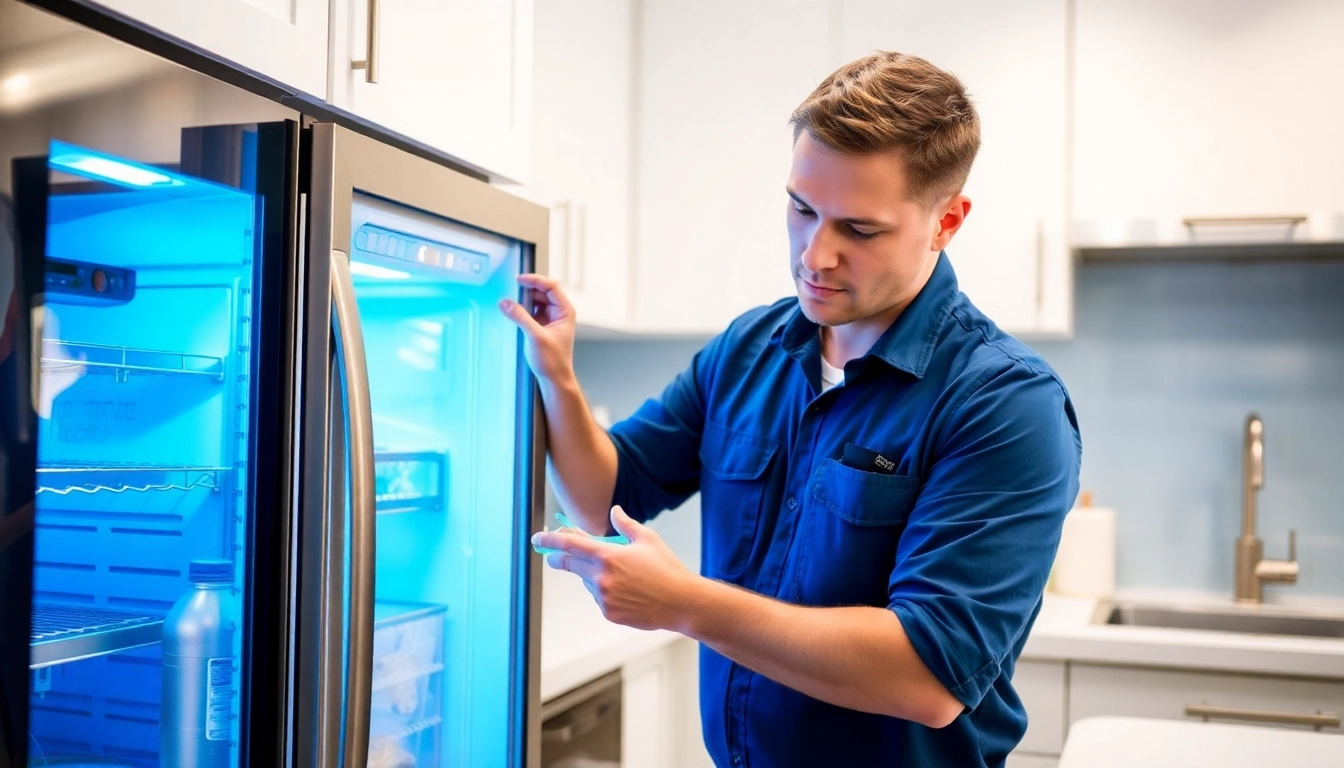Understanding Beverage Cooler Repair
Beverage coolers are essential appliances for keeping drinks at optimal temperatures, whether for home use or in commercial settings. However, like any appliance, they can experience issues that necessitate beverage cooler repair. Understanding these issues, how to identify them, and the steps for resolution is crucial for maintaining their reliability and efficiency.
Common Issues in Beverage Coolers
Common problems faced by beverage coolers include lack of cooling, unusual noises, leaks, and failure of the interior lights. Each of these issues can indicate deeper mechanical or electrical faults that need to be addressed to restore the cooler’s functionality.
- Cooling Failure: This is the most significant issue affecting beverage coolers. Possible causes range from thermostat malfunctions to compressor failures.
- Unusual Noises: If the cooler produces odd sounds, this may present cooling fan issues or compressor problems that require immediate attention.
- Leaks: Any pooling water around the cooler may point to a seal failure or clogged defrost drainage system.
- Interior Light Issues: If the lights inside the cooler do not operate, this could be a simple bulb issue or an electrical fault.
Signs You Need a Repair
Recognizing when your beverage cooler needs repair is vital to preventing more extensive damage. Some key signs to watch for include:
- The cooler does not maintain the set temperature.
- Frost or ice build-up inside the cooler.
- Water accumulation outside the unit.
- Frequent cycling on and off.
- Increased energy bills, indicating the cooler is working harder than it should.
DIY vs. Professional Repair
The choice between DIY repair and hiring a professional is largely influenced by the complexity of the issue and your personal comfort with appliance repair.
- DIY Repair: Simple problems, like a dirty condenser or thermostat adjustment, can often be resolved by the owner. This approach is cost-effective but must be approached with caution to avoid further damage.
- Professional Repair: For complex issues, especially those involving refrigeration systems, calling an expert is advisable. Professionals have the skills and tools necessary to diagnose and repair problems quickly and effectively.
How to Diagnose Cooling Problems
Checking the Compressor Functionality
The compressor serves as the heart of the beverage cooler. If it fails to operate properly, the cooling capacity of the unit will drop significantly. To diagnose compressor issues:
- Listen for unusual noises coming from the compressor, which may indicate wear or damage.
- Check for overheating by carefully placing your hand on the compressor; if it’s too hot to touch, it may need replacement.
- Examine the starter relay and overload protector for faults.
Inspecting Airflow and Dust Buildup
Debris buildup can impede airflow, impacting how effectively the cooler operates. Follow these steps for proper inspection:
- Unplug the cooler and clean the coils with a coil cleaning brush or vacuum.
- Look for obstructions near the vents that may prevent air circulation.
Evaluating Thermostat Settings
Improper thermostat settings may lead to cooling issues. To evaluate:
- Ensure the thermostat is set to the correct temperature.
- Monitor the interior temperature with an external thermometer to confirm accurate readings.
- Replace the thermostat if readings are inconsistent.
Tools and Materials Required for Beverage Cooler Repair
Essential Repair Tools for Home Use
To perform most repairs, you will need several basic tools:
- Basic screwdriver set (flathead and Phillips)
- Wrench set for bolt removal
- Multimeter for electrical measurements
- Coil cleaning brush
- Replacement light bulbs (if applicable)
Replacement Parts You Might Need
Common replacement parts that may be required when performing repairs include:
- Thermostats
- Compressors
- Fan motors
- Door seals or gaskets
- Drip pans
Maintaining Repair Safety
Safety is crucial during any appliance repair to avoid accidents or injury:
- Always unplug the beverage cooler before starting work.
- Wear safety goggles and gloves to protect your eyes and hands.
- Have a fire extinguisher nearby if handling electrical components.
Steps to Perform Common Repairs
Repairing a Non-Cooling Beverage Cooler
Addressing a non-cooling beverage cooler requires a systematic approach:
- Check if the cooler is plugged in and that the outlet is working.
- Inspect and clean the condenser coils to ensure optimal efficiency.
- Evaluate the compressor functionality.
- Examine the refrigerant levels; if low, consider contacting a professional for recharging.
Fixing Temperature Control Issues
To fix temperature issues, follow these steps:
- Adjust the thermostat to a colder setting and wait 24 hours for changes.
- Replace the thermostat if adjustments do not yield results.
- Ensure the fan is operational; replace if faulty.
Replacing Seals and Gaskets
Door seals and gaskets are vital for maintaining temperature. Replace them by:
- Removing the old gasket carefully, ensuring no residues are left.
- Aligning the new gasket evenly along the door frame.
- Securing it in place and testing the seal by closing the door and checking for light leaks.
Maintaining Your Beverage Cooler for Longevity
Regular Cleaning and Maintenance Practices
Regular maintenance extends the life of your beverage cooler. To keep it in top shape, consider the following practices:
- Clean the condenser coils every six months to prevent dust buildup.
- Regularly check and clean the interior surfaces to avoid odor and bacteria growth.
- Inspect door seals regularly to ensure they are intact and effectively keeping cold air inside.
Tips for Optimal Functionality
To optimize your beverage cooler’s performance:
- Keep it at a preferred temperature: typically between 35°F (1.5°C) and 50°F (10°C) for beverages.
- Ensure proper ventilation around the appliance to avoid overheating.
- Avoid overloading the cooler, which can impede airflow and cooling efficiency.
When to Consider Replacement
While repairs can extend the life of a beverage cooler, sometimes replacement is the best option:
- If repair costs exceed the value of the cooler.
- If the cooler is more than ten years old and frequently breaks down.
- If energy efficiency is no longer adequate, leading to high utility costs.
